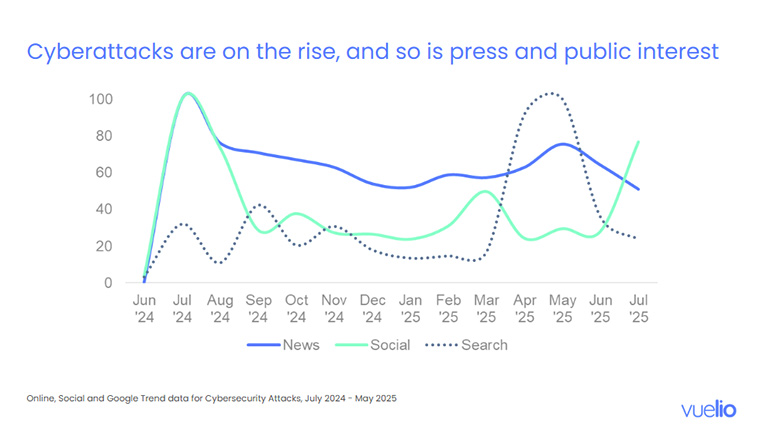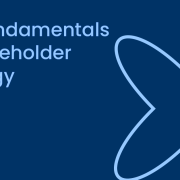Is email outreach as outdated as the 90s-era posted PR press mailer? With the comms industry rushing to integrate AI tools into their tech stack, the email blast could be seen as just another tactic of PR’s past. But think again…
‘At the start of my career fax and phone were the only way of reaching journalists,’ says Anne Cantelo, founder and managing director of Onyx Media and Communications Ltd.
‘Younger generations of PR hate the phone even more than the generations before them, and most journalists seem to feel the same. At the same time, journalists have confessed to me that they have thousands of unopened emails in their inboxes…’
Phone calls are out, and unread emails are piling up – the rush to integrate AI across the industry could signal that electronic mail will go the way of its franked counterpart. But the lessening of 1-2-1 engagement that comes with AI automation makes email even more valuable – especially when it’s powered-up by artificial intelligence.
Here is advice from comms professionals already evolving their email strategies to boost engagement.
1. Cutting through with quality content
Stakeholders are overwhelmed by constant messaging even outside of their inbox – how can you catch their eye?
‘The rise of AI presents both a challenge and an opportunity,’ says Liz Churchman, deputy managing director at B2B tech PR agency EC-PR.
‘With inbox filtering becoming more intelligent, relevance is no longer optional; it’s critical. Yet, AI also empowers us to create what I call a ‘one-to-one feel as one-to-many scale.’ Using tools like ChatGPT, we build custom GPTs aligned to buyer personas, underpinned by deep audience insight; motivations, fears, frustrations, so that our emails feel crafted with intent, not churned by automation.
‘Clean, segmented lists and emotionally intelligent messaging make the difference between delete and engage.’
Formatting is also important – short and relevant copy, interactive elements including video embeds and html features, and making sure it’s mobile-first for people on the go, or trapped in long meetings without access to their laptop…
2. Email as part of a wider strategy
‘Comms pros need to be where the audience is and adapt our methods and routes to communication,’ says Leopard Co CEO and co-founder Rachel Roberts, whose team utilises email as just one way to communicate with stakeholders.
‘It’s been a while since I faxed through a press release but meanwhile, we have embraced new routes to engage with audiences including WhatsApp messages, social media DMs, programmatic emails, remarketing and calling campaigns.’
Email is no longer in a silo, and should be used in conjunction with private messaging platforms like WhatsApp, Slack, and Discord; microsites and press rooms; personalised landing pages for campaigns; and follow-ups after in-person networking.
Sycamore Communications’ PR manager Danielle Windecker-Hilton advocates for email as a ‘connecting’ tool:
‘We treat email as a connector, driving recipients to deeper content or prompting direct engagement with the people and brands we represent. It supports our clients’ goals and can be a good initial touchpoint with journalists and publications.’
‘Attending to emails can be viewed by some as a bit of a negative, burdensome chore,’ admits Rachel. ‘Indeed, we have a client who only wants to communicate with us on WhatsApp.
‘But with email carrying weight from a legal perspective – eyeballs are there, and so is the marketing opportunity.’
Just remember to be careful…
‘Automation and AI does make email marketing more accessible, but it means more people with less expertise can be spamming people,’ warns Rachel. ‘There is no quicker way to break a brand than to spam and annoy your customers. Press send with care.’
3. Personalisation
Does bringing artificial intelligence into email strategy make the messaging impersonal and robotic? Used properly, AI can actually bring personalisation back into your email strategy.
‘AI helps us go beyond just inserting someone’s name,’ shares Ed Hopkins, managing director of Ed Hopkins PR.
‘AI can tailor emails based on behaviour, preferences, or timing. This leads to more relevant content and stronger engagement. People are more likely to respond when they feel a message is meant for them.’
4. Optimisation
Writing eye-catching subject lines that are just the right length; segmenting your contact lists, selecting the right sending times; and predicting the levels of engagement – AI can help with all this.
But before you get stuck into prompting on ChatGPT or Gemini, here is some extra help from Riley Gardiner, founder of No Strings Public Relations:
‘To stand out in busy inboxes you’ll need to focus on concise, relevant subject lines and genuine, value-driven content. Avoiding generic language and adding a human touch helps cut through noise.
‘Email offers a direct, personal channel for stakeholder communication that social or mass media can’t replicate. It supports ongoing dialogue, builds trust, and allows for nuanced messaging in ways that other tactics struggle to match.’
5. Complying with regulation, not dicing with dodgy data
GDPR, CCPA, and incoming abbreviated regulations for the use of data means that opt-in emails are non-negotiable for comms professionals.
Your media database of choice can help with this (like the Vuelio Media Database, for example…) and so can AI.
‘AI can be a great help in staying GDPR-compliant by automating consent management and ensuring data is handled correctly, reducing human error,’ says Riley Gardiner.
Just make sure your lists are maintained and kept up-to-date…
‘AI can help identify potential compliance risks, streamline workflows, and ensure that personalisation is based on compliant, permissioned data,’ says Gerard Boon, Financial Times contributor and managing director of Boon Brokers.
‘But it’s important to remember that AI is only as effective as the framework it is given. Human oversight must remain a non-negotiable part of the process – experts in their field need to be vigilant and ready to amend, review, or flag potential issues as they arise.’
6. Making more of metrics
Open rates are less reliable with the increased use of email protection and privacy tools, but there are other metrics to make the most of – including clicks, replies, and conversions. Some tools also offer bespoke insights, like time spent reading an email. Additionally, it’s important to keep an eye on factors like send times to optimise delivery.
‘While open rates still provide some value, I think it’s important to remember the fundamental principles behind comms is to establish a relationship and communication,’ says Gerard.
‘Focusing on click-through rates (CTR), time spent on linked content, and conversion actions (such as booking a call or completing a contact form) are actually better measuring metrics to establish how close your branding and messaging is with your specific target audience.
‘Reply rates and engagement with follow-up emails are now more important than ever, putting in place a stronger bond of genuine interest and intent.’
7. Human to human connection
Journalist and stakeholder inboxes fill up with generic pitches throughout the day. Effective email strategy in comparison goes further, focusing on relationship building rather than blasting out a message.
‘Email still allows for direct, personal communication that can be tailored to your ideal client,’ says Sarah Lloyd, founder of ISPR.
‘I still believe that email can create a more intimate and focused experience, allowing for thoughtful and deeper conversations. Emails can be segmented and targeted, and you can track, document and enjoy focused interactions without the noise of social media.’
Email can be a personalised check-in with a client, an invitation to an upcoming event, or the sharing of a piece of content relevant to their industry. It should be a continuing conversation – not a series of non-sequitur statements littering an already busy inbox.
‘In today’s crowded inboxes, success comes from speaking to your audience’s problems, not your solutions,’ adds Liz Churchman.
‘If your subject line and first line don’t address what keeps your audience up at night, they’ll be gone in two seconds. Relevance, empathy and creativity must drive every word.’
Evergreen email
‘Email remains one of the most direct and controlled forms of communication,’ believes Gerard Boon.
‘Unlike social media or paid ads, it allows us to be incredibly specific on our outreach, tailoring a wide-variety of content for nuanced and context-rich messaging. There are no character limits as such and less platform restrictions.
‘While innovations in technology have boomed in recent years, there is a lot of focus on social media influencers, podcasts, and hyper attentive alternative platforms. While these all have a place under the umbrella of marketing, I think it is sometimes forgotten that emails offer that personalised edge with a familiar outreach – we’re all still connected to the online world.
‘For stakeholder engagement, this means we can maintain, build on, and direct to useful resources, with a strategy that continues to build an evergreen trust over time.’
Our own email expert, Pulsar Group head of global marketing campaigns Kirsti Kauronen says:
‘For us, email is one of the key channels to reach our audiences directly. With new AI tools emerging at a fast pace, we are able to deliver even more tailored comms with greater impact.
‘Many email providers now offer automatic summaries of emails, so it’s even more important to include strong subject lines and opening sentences that stand out in crowded inboxes.
‘And don’t forget to test your content regularly. It’s essential to optimise performance and ensure your key message comes across clearly.’
For help with your emails, and wider comms strategy, check out Vuelio’s Media Database, Stakeholder Relationship Management, and Media Monitoring solutions.








